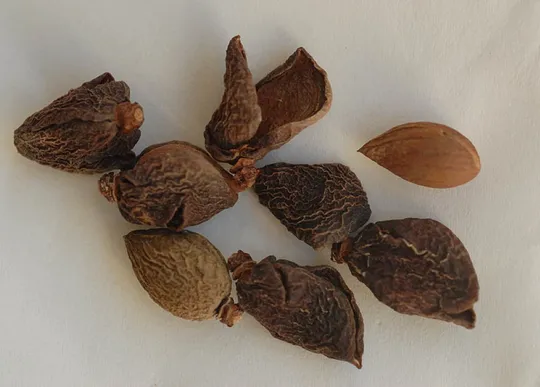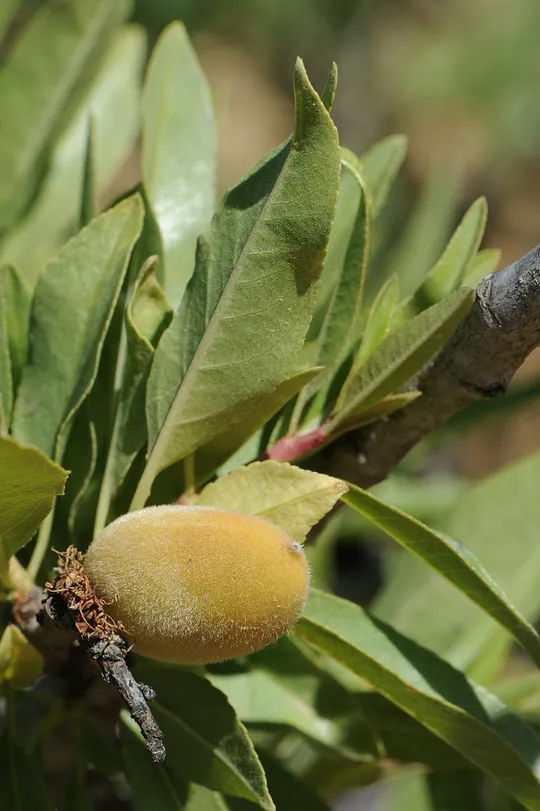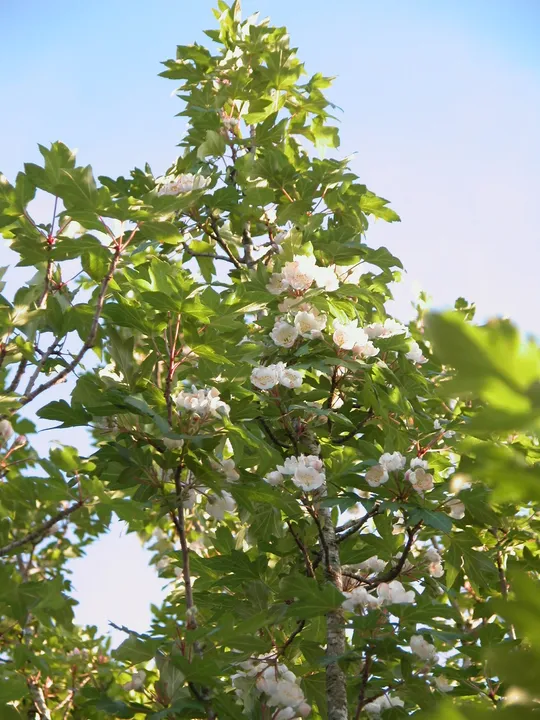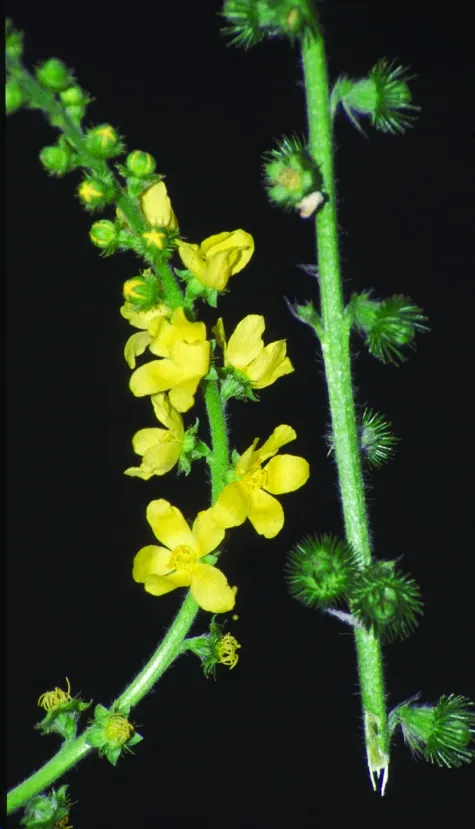Broom Almond
Amygdalus arabica



Amygdalus arabica grows in the
eastern Judean Desert at three sites – Wadi Prat, Wadi Makuk and Wadi Mikhmas.
It is extinct from one site and there are an estimated four sites. Mimi Ron discovered
the species in Israel in 1977, near the meeting point of Wadi Prat and Wadi Mikhmas.
Meanwhile, the first plant that was discovered was cut down, but additional shrubs
were discovered further upstream in Wadi Mikhmas. Shuka Ravak discovered an additional
single plant in Wadi Makuk. Dror Galili photographed another shrub in Mitspe
Shlagim on the Hermon heights (about 2224 m) in 1974; the Hermon habitat – arid
rocky slopes on high mountains – is characteristic throughout the Fertile
Crescent in the Middle East.
Cliff slopes in canyons descending from Jerusalem and the Samarian transition zone to the Jordan Valley, in the transition zone. In Wadi Mikhmas A. arabica grows near the narrow rocky stream bed and on a northern slope on cliff steps. In Jordan the shrub grows on the gravel stream bed of Wadi Botum in the eastern desert. In the southern Zagros Mountains in Iran, A. arabica creates a plant association that is named for it and it dominates there on extensive areas in the montane transition zone scrubland that is between the desert and the tragacanthic zone.
The genus Amygdalus consists of
about forty species, which grow from Central Asia to the Balkans and southern
Italy (Browicz, 1973). Its center of diversity is in Turkey (19 species) and
Iran (16 species). The species Amygdalus
is customarily considered a section in the large genus Prunus, but some experts
prefer to confer the status of an independent genus for the Amygdalus species. The
difference between Amygdalus and Prunus
is clear: in Prunus the ripening pulp is juicy and sweet while the fruit
peel in Amygdalus dries and curls upon ripening and does not participate in the
fruit dispersal process. Accordingly, the Prunus fruit is eaten and dispersed
by birds and large mammals whereas the Amygdalus fruit stone that does not open,
falls from the tree and is dispersed only over small distances. In addition,
the Amygdalus
fruit peel is tomentose (like in the peach) and not shiny-smooth as in the Prunus
and Cerasus species.
A.
arabica belongs to the species in Amygdalus Sec. spartioides
that grows in the desert transition zones of the Afghanistan mountains and the
Zagros mountains of the Middle East. They have characteristic green stems that
are leafless for most of the year. This is a group of four species growing in
dryer regions than those in which A. korschinskii
and A. communis grow.
·
The distribution
of Amygdalus arabica is limited to only one region, at a
very small number of sites.
·
Only twelve specimens
are known in Israel, from all the sites combined.
·
The tiny plant
population is endangered by demographic factors and random damage.
·
A. arabica
is protected in Israel by law. The plants grow in the Wadi Prat and Wadi Makuk nature
reserves.
·
The species is extremely
rare in Jordan as well and in the entire Levant; according to estimates there
are only a total of twenty specimens in those countries.
Amygdalus arabica plants growing in
the Judean Desert canyons and cliffs should be afforded specific protection
from cutting.
Amygdalus arabica grows in the Fertile
Crescent Mountains from the Zagros in southwestern Iran, through the mountains
of Kurdistan in northern Iraq and southeastern Turkey to the Anti-Lebanon Mountains
and the Hermon. It is also found at several sites in the Syrian Desert and at a
single location in northern Saudi Arabia. The Wadi Mikhmas and Makuk sites are
extreme western sites in the species global range, thus their great importance.
Unlike the Zagros and Kurdistan Mountains where the distribution of A. arabica
is almost continuous, in the Levant (Syria, Lebanon, Israel and Jordan) its
distribution is highly fragmented and each population consists of only few shrubs.
In Jordan too, A. arabica is also a very
rare shrub that has been found so far only at one site.
Amygdalus arabica is an extremely
rare shrub that grows on a very small number of sites in canyon cliffs of the
Judean Desert. Israel is at the southwestern edges of its global distribution. A. arabica is threatened by
cutting and the small size of its populations. It is also endangered
in Jordan, Syria and Lebanon.
שמידע א. ומ. רון, 1983 – שקד ערבי – מין חדש לא"י המערבית. רתם 6: 48-51.
Browicz, K. 1973. The Genus Amygdalus in Turkey. Pp: 239-255, in: Proc. Inter.Symp.on Abies equi-trojani and Turkish Flora. Univ. Istanbul, Fac.of Forestry, Pub. 209.
Current Occupancy Map
| 1000 squre meter pixel | 5000 squre meter pixel | 10000 squre meter pixel | |
|---|---|---|---|
| number of observations | 0 | 0 | 0 |
| in total pixels | 0 | 0 | 0 |
| Family | Rosaceae |
| Classification | On the endangered species list |
| Ecosystem | Semi-Steppe Belt |
| Chorotype | Western Irano-Turanian |
| Conservation Site |
| Rarity |
1
4
6
|
|---|---|
| Vulnerability |
0
1
4
|
| Attractiveness |
0
2
4
|
| Endemism |
0
0
4
|
| Red number |
1
4.2
10
|
| Peripherality | E |
| IUCN category | DD EW EX LC CR EN VU NT |
| Threat Definition according to the red book | Endangered |
 Based on:
Based on:






